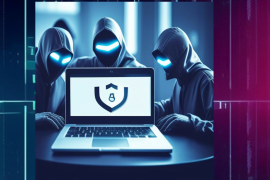Welcome to your ultimate guide for safe surfing! With the increasing number of cyber threats out there, cyber security has become more important than ever. In this section, we will explore the importance of cyber security and how it impacts your online safety. We will also take a closer look at the various types of cyber threats that you may encounter and the risks associated with them.
Key Takeaways
- Cyber security is crucial for your online safety.
- Cyber threats are numerous and can cause serious harm to your digital assets.
- By understanding the importance of cyber security, you can identify potential risks and take steps to safeguard your digital environment.
- Stay tuned for the following sections, where we will explore the components of cyber security, ways to assess vulnerabilities, and best practices for enhancing your cyber security.
Understanding Cyber Security and Its Components
Protecting your digital assets requires a comprehensive approach to cyber security. There are three main components to consider: data protection, network security, and information security. Each of these is crucial for safeguarding your sensitive information and personal data.
Data Protection

Data protection involves controlling access to your data and ensuring its confidentiality and integrity. This includes implementing measures such as encryption, password protection, and access controls.
When you encrypt your data, you scramble it so that it is unreadable without the proper decryption key. Password protection and access controls restrict who can access your data, reducing the risk of unauthorized users getting their hands on your sensitive information.
Network Security
Network security refers to protecting the computer networks that operate within your digital environment. This includes securing your Wi-Fi network, firewalls, and intrusion detection systems (IDS).
Securing your Wi-Fi network involves implementing a strong password and using Wi-Fi Protected Access (WPA) encryption. Firewalls create a barrier between your computer and the internet, preventing cyber criminals from accessing your network. IDS monitors network traffic for suspicious activity and alerts you if a potential threat is detected.
Information Security
Information security involves protecting the information you store and transmit digitally. This includes implementing protections such as anti-virus software, anti-malware software, and regular software updates.
Anti-virus and anti-malware software detect and remove malicious software from your computer, reducing the risk of cyber attacks. Regular software updates ensure that known vulnerabilities are patched, reducing the risk of cyber criminals exploiting them.
By understanding and implementing these three components of cyber security, you can better protect your digital assets and safeguard your information from cyber threats.
Assessing Vulnerabilities: Identifying Weaknesses in Your Digital Environment

Conducting regular vulnerability assessments is crucial in identifying potential weaknesses in your digital environment. With the prevalence of cyber threats and hacking attempts, it’s essential to stay one step ahead by proactively identifying and addressing vulnerabilities that could compromise your information security.
A vulnerability assessment involves identifying, quantifying, and prioritizing vulnerabilities in your network or systems. This process includes evaluating potential threats and determining the likelihood of an attack, as well as assessing the potential impact of such an attack should it occur.
It’s essential to perform a vulnerability assessment regularly to ensure that any newly identified threats are addressed promptly. This process not only helps identify weaknesses but also provides a roadmap for implementing security measures to reduce the risk of cyber attacks and hacking attempts.
By conducting a vulnerability assessment, you can identify any potential vulnerabilities that could be exploited by cybercriminals and take action to mitigate these risks. This could include implementing updated security protocols, patching vulnerabilities, and ensuring that all software and hardware are up-to-date.
In conclusion, performing regular vulnerability assessments is critical to maintaining strong cyber security. By identifying potential vulnerabilities and taking action to mitigate risks, you can safeguard your digital environment from cyber threats and hacking attempts.
Best Practices for Cyber Security
Cyber security is crucial in maintaining digital security and protecting your internet privacy. By implementing best practices, you can significantly reduce the risk of cyber threats. Here are some tips:
- Use strong, unique passwords for all of your online accounts.
- Enable multi-factor authentication whenever possible to add an extra layer of protection.
- Regularly update your software and devices to ensure they are running the latest security patches.
- Avoid using public Wi-Fi networks for sensitive activities, such as online banking.
- Be cautious when opening emails or attachments from unknown sources.
- Use anti-virus software and keep it up-to-date.
- Encrypt sensitive data and information whenever possible.
- Regularly backup your data to secure, off-site locations.
- Stay informed about the latest cyber threats and take necessary precautions.
By following these best practices, you can strengthen your cyber security and protect your digital assets from potential cyber threats.
Responding to Cyber Attacks: Mitigation and Incident Response

Despite taking preventative measures, there is still a possibility that your digital environment may be compromised. In the unfortunate event of a cyber attack, it is crucial to have a solid response plan in place.
First and foremost, it is important to disconnect any affected devices from the internet to prevent further damage. This includes unplugging Ethernet cables, disabling Wi-Fi, and turning off Bluetooth. Notify your IT department or a trusted professional immediately to assist with the incident response.
Identifying the source and scope of the attack is essential in mitigating the damage caused. This may involve conducting a detailed investigation of your digital environment to determine the extent of the damage and potential entry points for attackers.
It is also important to preserve any evidence of the attack for further analysis or legal action. This includes taking screenshots, logging relevant data, and securing physical evidence if necessary.
Once the attack has been contained and the damage has been assessed, take steps to prevent future incidents. This may include upgrading your cyber security measures, conducting regular vulnerability assessments, and educating employees on safe online practices.
Remember, responding to a cyber attack requires a quick and strategic approach to minimize the damage caused. By implementing an effective incident response plan, you can protect your information security and safeguard your digital assets.
Conclusion
Now that you have a comprehensive understanding of cyber security and its importance to your online safety and digital security, it’s crucial to prioritize your cyber security efforts. Remember, cyber threats are constantly evolving, and staying ahead of them requires ongoing vigilance and effort.
Whether you’re an individual user or a business owner, implementing best practices for cyber security is essential. These strategies include creating strong passwords, using multi-factor authentication, securing your devices, and safeguarding your internet privacy.
In the event of a cyber attack, it’s crucial to have an incident response and mitigation plan in place. This includes minimizing the impact of the attack and protecting your information security.
Overall, prioritizing cyber security is vital in today’s digital landscape. By implementing best practices and staying informed about potential vulnerabilities, you can protect yourself and your digital assets from cyber threats and ensure your online safety and digital security.
FAQ
Q: What is cyber security?
A: Cyber security refers to the practice of protecting computers, servers, networks, and digital information from unauthorized access, theft, or damage.
Q: Why is cyber security important?
A: Cyber security is important because it helps safeguard your personal and sensitive information, such as passwords, financial details, and personal documents, from cyber threats and unauthorized individuals.
Q: What are common types of cyber threats?
A: Common types of cyber threats include malware, phishing attacks, ransomware, social engineering, and hacking attempts. These threats aim to exploit vulnerabilities in your digital environment to gain access to your information or disrupt your online activities.
Q: How can I protect my data and network?
A: You can protect your data and network by implementing strong passwords, using multi-factor authentication, regularly updating software and operating systems, using firewalls, and encrypting sensitive information.
Q: What should I do if I experience a cyber attack?
A: If you experience a cyber attack, it is important to disconnect from the internet, report the incident to the appropriate authorities or your IT department, change passwords, and restore your system from a secure backup to mitigate further damage.
Q: How often should I assess vulnerabilities in my digital environment?
A: It is advisable to conduct regular vulnerability assessments, at least once a year or whenever there are significant changes in your digital environment, to identify and address potential weaknesses that could be exploited by cyber threats.
Q: What are some best practices for cyber security?
A: Some best practices for cyber security include creating strong, unique passwords for each account, using reputable antivirus software, being cautious of suspicious emails or links, keeping software and devices up to date, and regularly backing up important data.
Q: How can I respond to a cyber attack?
A: In response to a cyber attack, it is important to have an incident response plan in place. This includes isolating affected systems, gathering evidence, notifying relevant parties, and implementing measures to prevent future attacks.
Q: Why should I prioritize cyber security?
A: Prioritizing cyber security is essential for safeguarding your online safety, protecting your personal and financial information, and preventing potential damage or loss resulting from cyber attacks. It helps maintain digital security in an ever-evolving threat landscape.




